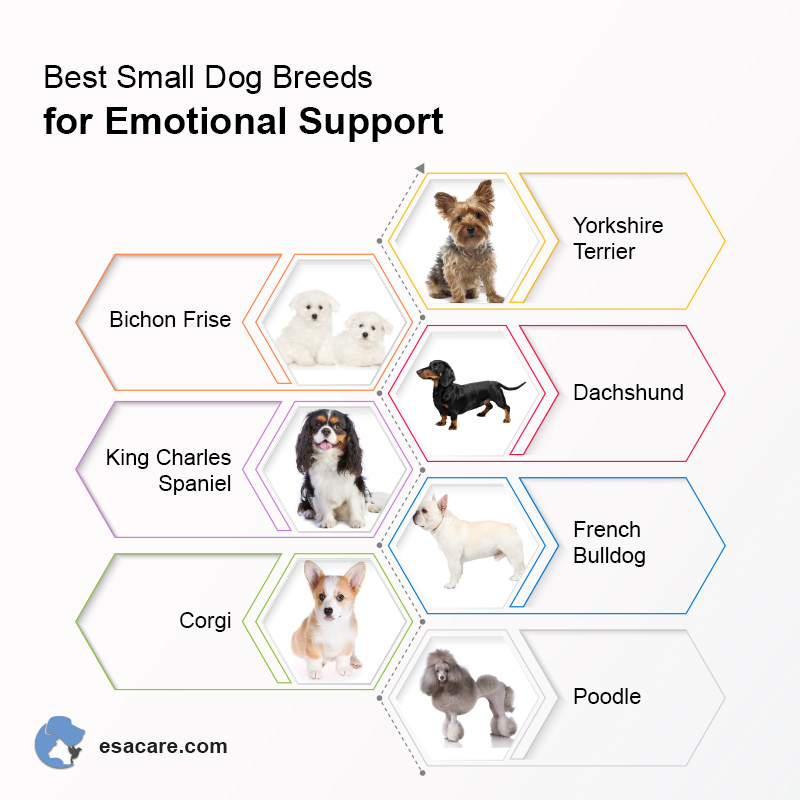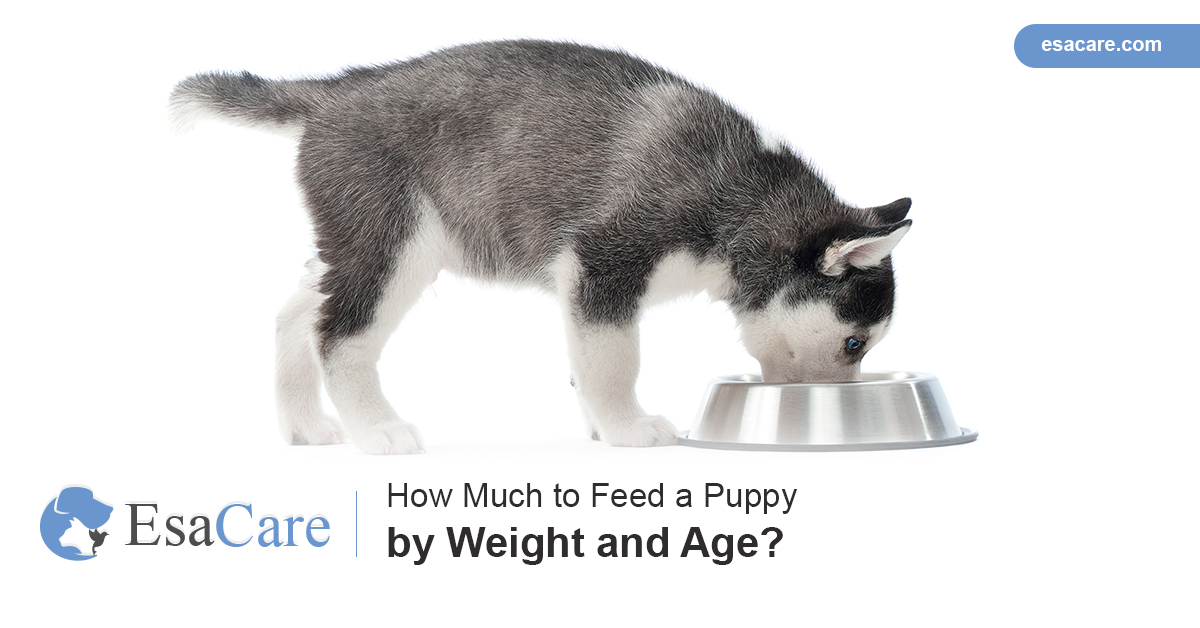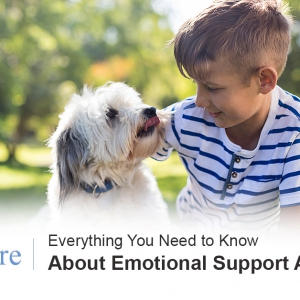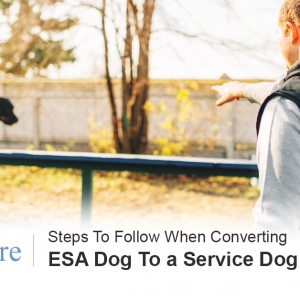How Much to Feed a Puppy by Weight and Age?
With the realization of the many benefits that emotional support animals (ESAs) have for people with different mental health conditions, most doctors are prescribing them for their patients. One of the leading choices is a dog. This is because dogs are easy to get along with, have minimal care needs, and are emotionally intelligent. This does not mean that if you settle for a dog you have to pick a fully grown one. Even a puppy will do. In fact, pups are better options for kids and people living in cramped quarters like apartments or condos.
As an ESA, you need to take the maintenance of your puppy into account. These include enough exercise, adequate playtime, spacious housing, and, of course, food. Unfortunately, feeding a pup sounds like a challenging task for someone dealing with a mental health issue.
ESA dog can improve your overall mental health. Click the button below to get your ESA letter.
The tidbits below will discuss how much you should feed your puppy according to its weight and other aspects surrounding the feeding of your ESA.
How Much to Feed a Puppy by Age?
People erroneously assume that puppies and fully-grown dogs have the same nutritional needs. For puppies to grow into healthy adults, they require a lot of carbs, micronutrients, and proteins. Moreover, they should have a lot of calories in their feeds to support their growth. Remember that your puppy’s mouth is smaller than that of an adult dog’s. As such, its feeds should be small. Feeding your pup on an adult’s feed might damage its jaws, teeth, and overall health.

Top Foods to Feed Your Puppy
How Much to Feed a Puppy Based on Weight?
The amount of food that will suffice for your puppy also depends on its weight. After all, different dog breeds will have different weights and cannot be fed on the same food portions. For example, a Russell Terrier will weigh less at different ages compared to a Labrador retriever. To this end, the right feed amount for your puppy will depend on its weight and age.
A few pup feeds include a puppy feeding guide calculator on their packages following the format of how much to feed a puppy chart UK. If yours does not, here is a feeding chart for your puppy at different ages and weights along with another detailing the frequency of the feeds at different ages.
| Weight at maturity {kg} | Weight at maturity {pounds} | 1.5-3 months
{Cups} |
4-5 months
{cups} |
6-8 months
{cups} |
9-11 months
{Cups} |
1-2 years
{Cups} |
| 1.4-5.5 | 3-12 | 0.5-1 | 2/3-1.75 | 0.5-1.5 | Same as adult | Same as adult |
| 5.9-9.0 | 13-20 | 0.5-1.25 | 1 1/8-2 | 0.75-1.75 | 1-1.5 | Same as adult |
| 9.5-22.5 | 21-50 | 0.5-1.5 | 1.5-2.75 | 1 -2 1/3 | 2-3 | 2-4 |
| 23-34 | 51-75 | 5/8-2.75 | 1.5-4 | 1.5-3.75 | 2.5-3.75 | 2 5/8-6.25 |
| 34-45 | 76-100 | 1-2.75 | 2 -3.75 | 2 -6 1/3 | 3 -7 | 5 -11 |
| >45 | >100 | 2-2.75 plus an extra 0.75 for every ten pounds over 100 | 3.75 and an extra third for every ten pounds above 100 | 6 1/3 and an extra third for every ten pounds above 100 | 7 and an extra third for every ten pounds above 100 | 11 and an extra third for every ten pounds above 100 |
One of the main questions you will ask when caring for your puppy is ‘how much dry food do I feed my puppy?’ The table above is a general guideline on how much you should dry foods you should give your puppy.
When considering the above table, remember that small and toy breeds can transition to adult feeds earlier than some giant breeds. The smaller breeds can be started on adult feeds at 7-9 months, while giant breeds will wait until they are 18-24 months. When a dog attains 90% of its adult, it is considered an adult in feeding. This means it can be switched to an adult diet to maintain the nutritional needs of animals past their growing stages.
Your ESA Dog can be your best companion. Click the button below to get your ESA letter.
Frequency of Feeds
The following table details the ideal frequency of your puppy’s feeds.
| Age {weeks} | Feed frequency/day |
| 8-12 | 3-4 |
| 16-20 | 3 |
| 21-32 | 2 |
| 36-44 | 2 |
| >45 | 2 |
How Much Should a Puppy Eat per Day?
It is crucial to get the amount of feeds for your puppy right. If you feed a little dog too little, you might have to deal with nutritional deficiencies in a few months. Can you overfeed a puppy? Yes, giving a puppy too much food places the puppy at risk of obesity. Obesity in your puppy comes with health issues like heart failure, musculoskeletal problems, Cushing’s disease, skin disease, and labored breathing.

Best Small Dog Breeds for Emotional Support
The right amount of food for your pup per day depends on the type of food, frequency of feeds, metabolic rate, and exercise amount. Here is a table to ease your choice of how much you should give your puppy per day.
| Weight of adult dog {kg} | 3 months {grams/day} | 3-6 months {grams/day} | 6-9 months
{grams/day} |
9-12 months {grams/day} | 12-18 months
{grams/day} |
18-24 months {grams/day} | 2 years {grams/day} |
| <5 | 55-75 | 85 | Fully grown | Fully grown | Fully grown | Fully grown | Fully grown |
| 5-10 | 100-140 | 140-160 | 150-160 | Fully grown | Fully grown | Fully grown | Fully grown |
| 10-25 | 200-250 | 260-310 | 300-310 | Fully grown | Fully grown | Fully grown | Fully grown |
| 25-50 | 320-440 | 500-550 | 540-550 | 540-560 | 510-550 | Fully grown | Fully grown |
| >50 | 420-600 | 695-800 | 790-800 | 800 | 780-850 | 850 | Fully grown |
Feeding Tips for Dogs at Different Ages
The following are a few tips for feeding your puppy at different ages:
- Feeding Puppies at 8 Weeks Old: Amid all the craziness surrounding raising a pup, one of the questions you are probably asking is ‘how much should I feed my 8-week old puppy? Pups should be left to freely feed on their mother’s milk for the first eight weeks. Even so, you should start transitioning your puppy to solids at 5-7 weeks to wean them off the milk. When starting the transition, wet the pup’s kibble and allow it to soak until it is soft. You should continue softening the kibble for several weeks while decreasing the water so that your ESA slowly gets used to crunchy kibble. By the eighth week, the pup should have fully transitioned to dry food.
- 6-12 Months Old: At this point, you should establish regular feeding schedules for your puppy. Start with two feedings per day and leave the food bowl in a set place for specific periods. You can start leaving the bowl for 5-15 minutes then increase or decrease this time depending on how fast the pup will eat. Be consistent and place the food at the same spot at the same time so that your ESA quickly learns the schedule.
- Over a Year Old: At this point, you introduce your pup to adult dog feeds. You can do this by slowly mixing the adult food in small portions of the pup’s food. Start with 25% adult food and 75% pup food for 2-3 days then increase adult food by 10%.
Looking for an ESA Letter for your dog? Click the button below!
Conclusion
With the above guidelines, feeding your puppy will be easy. If you have a pedigree puppy for your ESA, there is a pedigree puppy food calculator you can use. Either way, your first step with an ESA is getting a recommendation letter from a mental health specialist to give you access to the legal protections of an ESA. You can easily and conveniently get one after passing an assessment by specialists.
Contact Us at ESACare for a valid ESA letter or click the banner below to book your appointment.










 347 5th Ave Suite 1402-112,
347 5th Ave Suite 1402-112,

Leave a Reply
Want to join the discussion?Feel free to contribute!